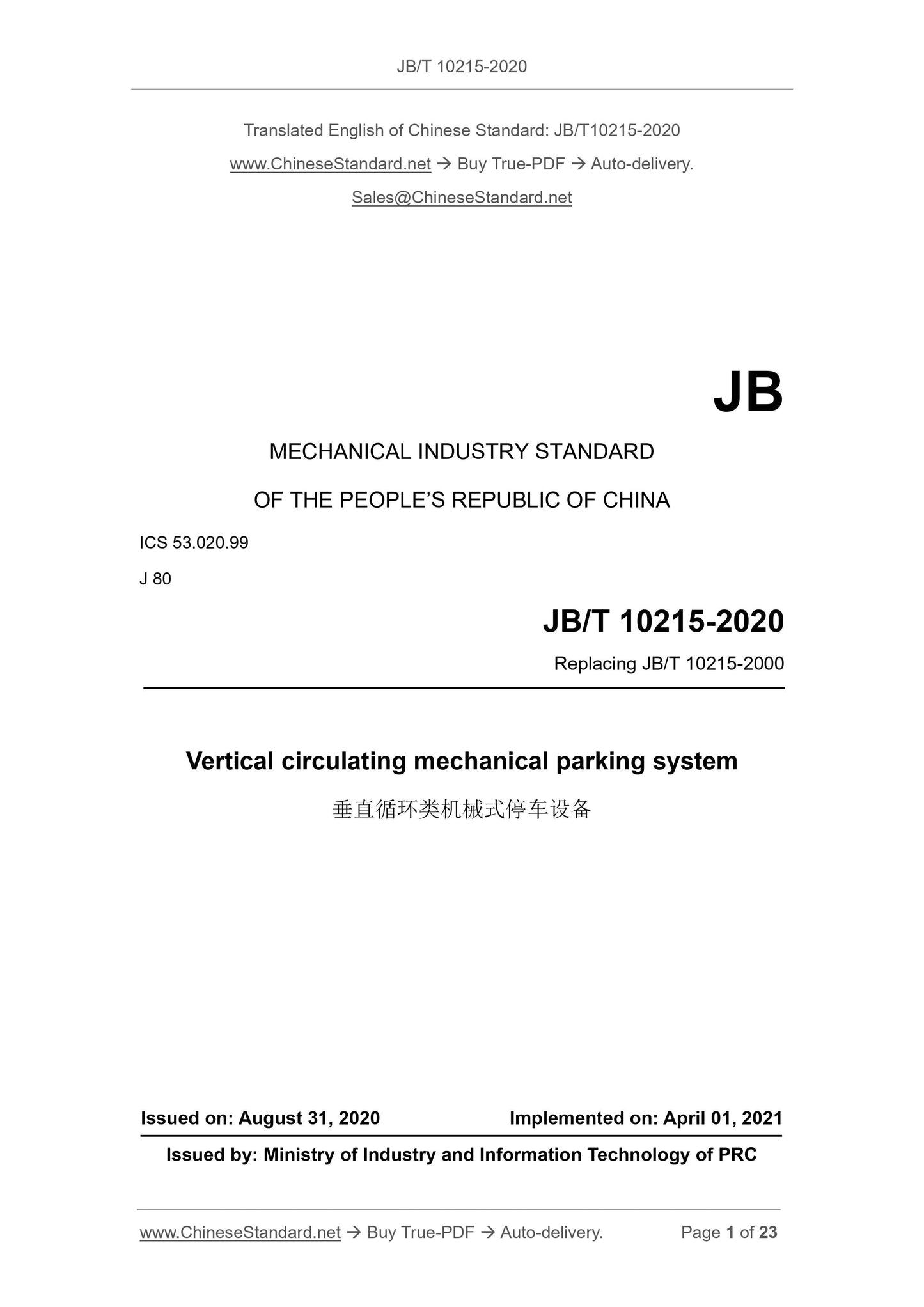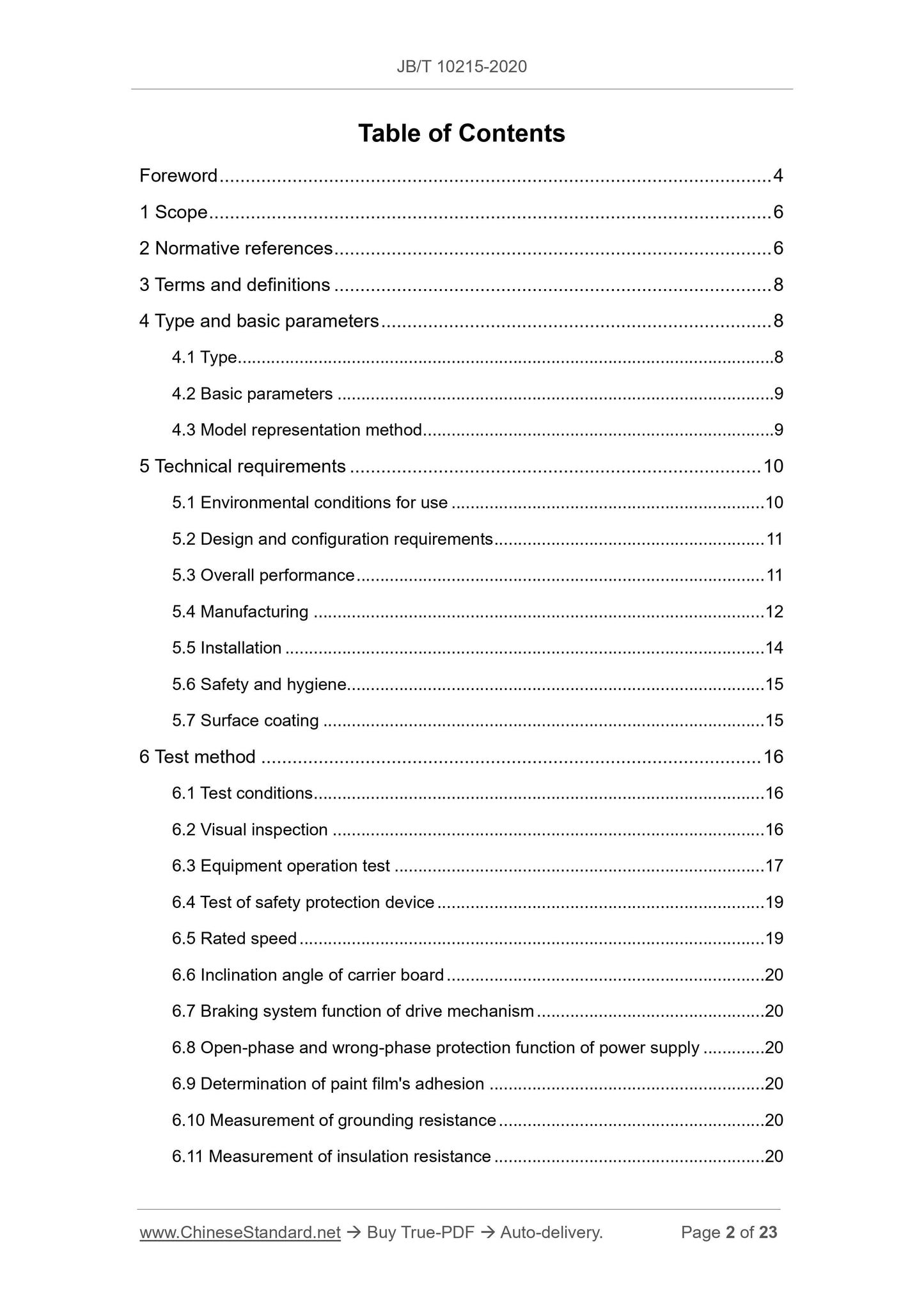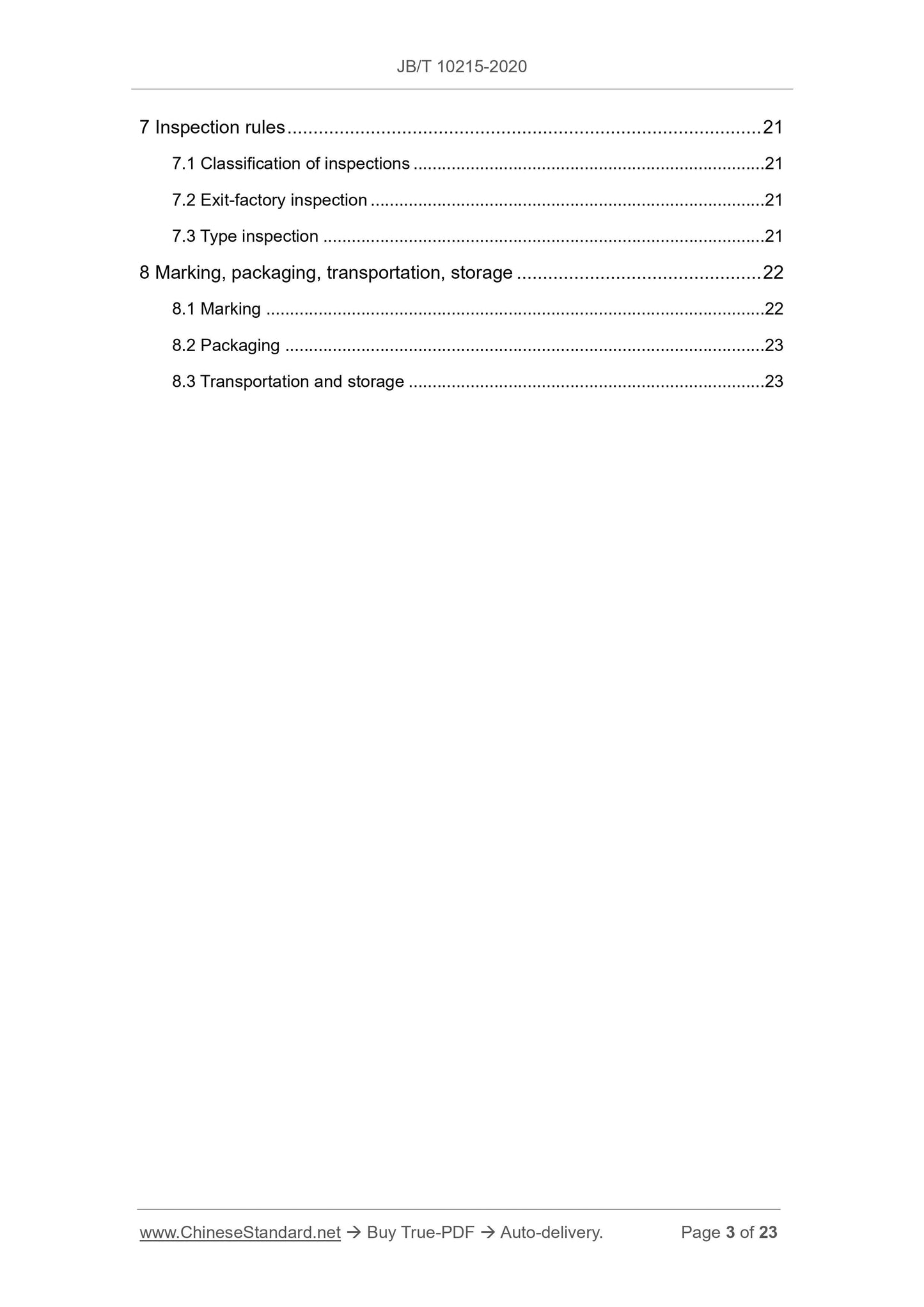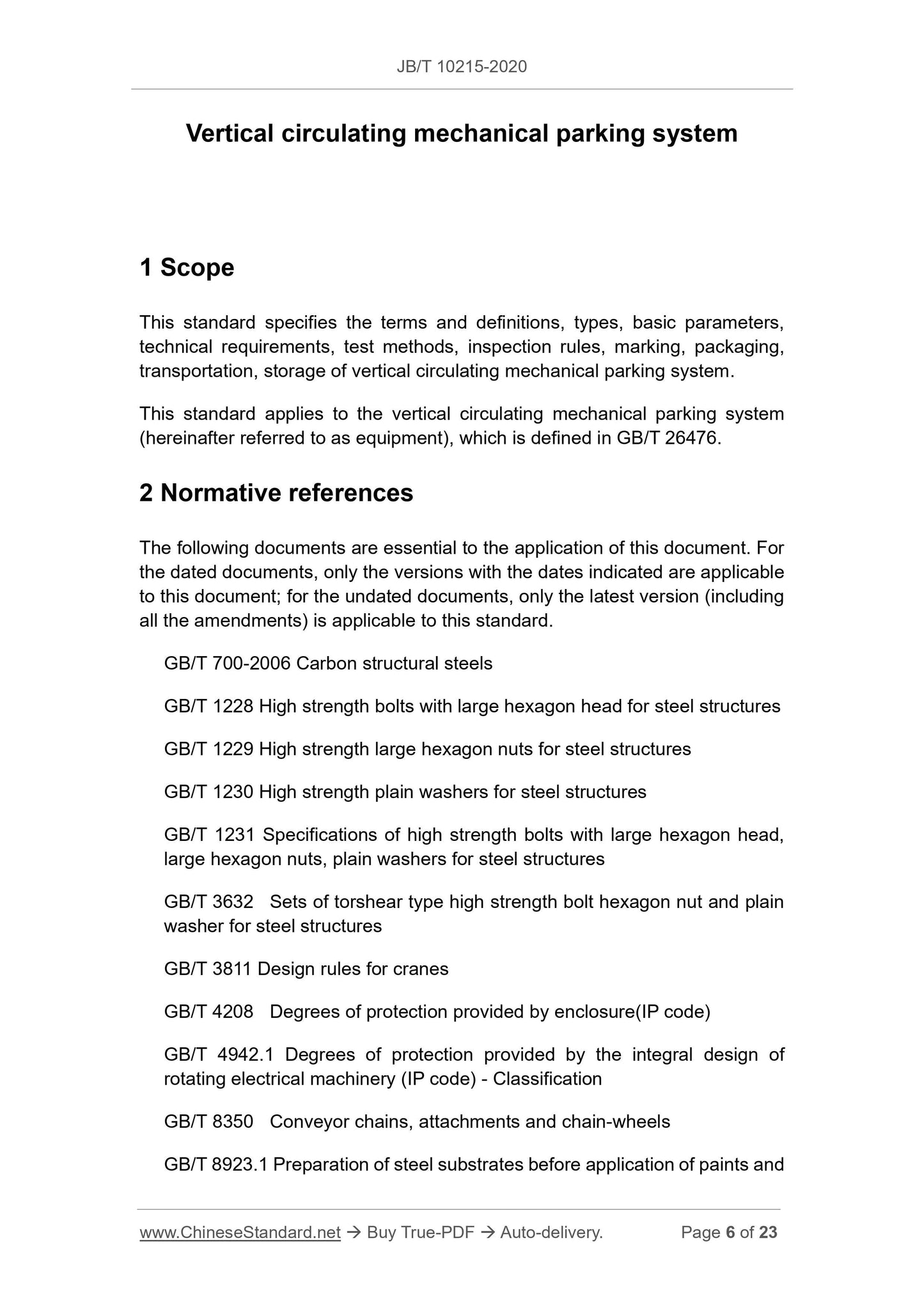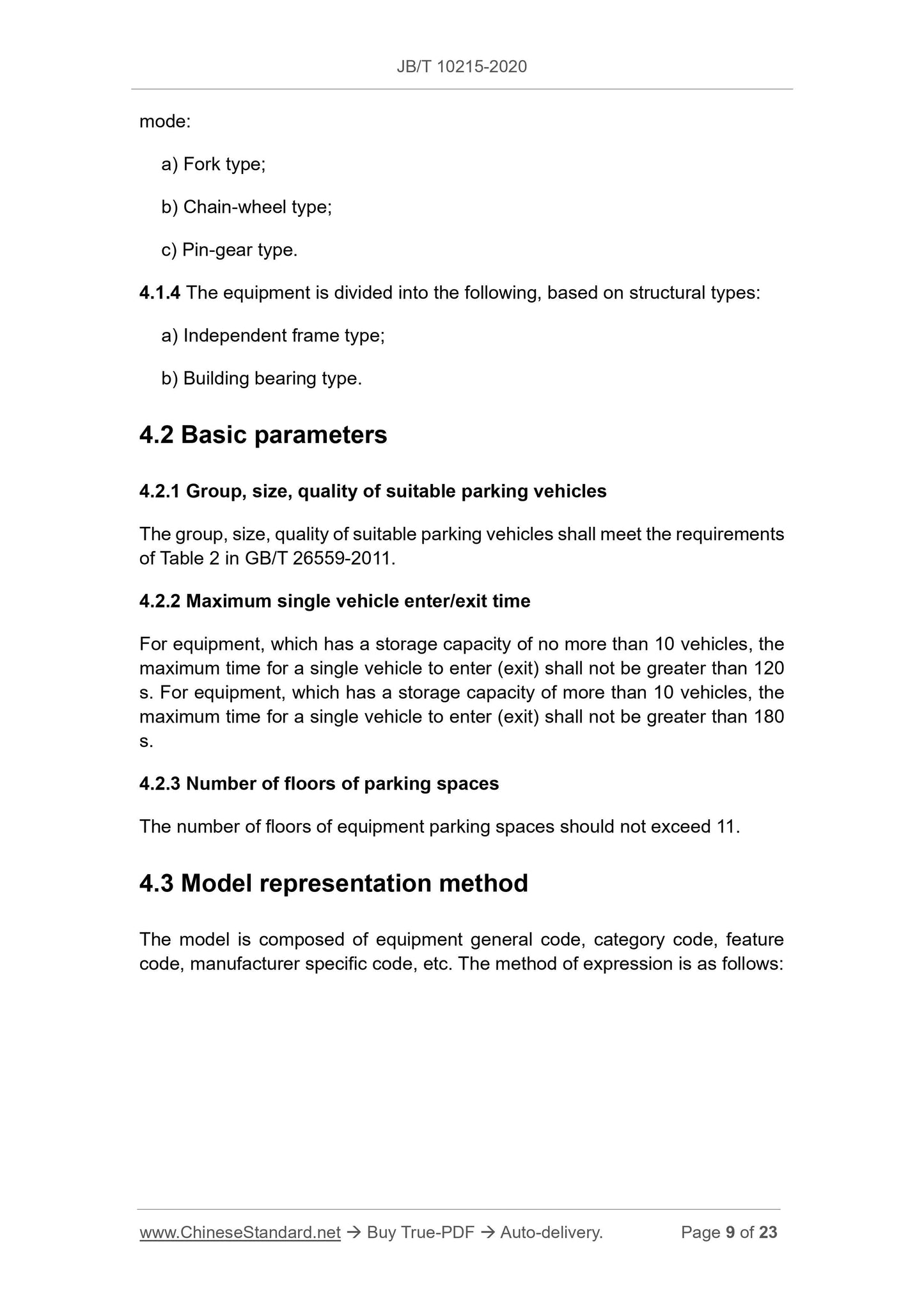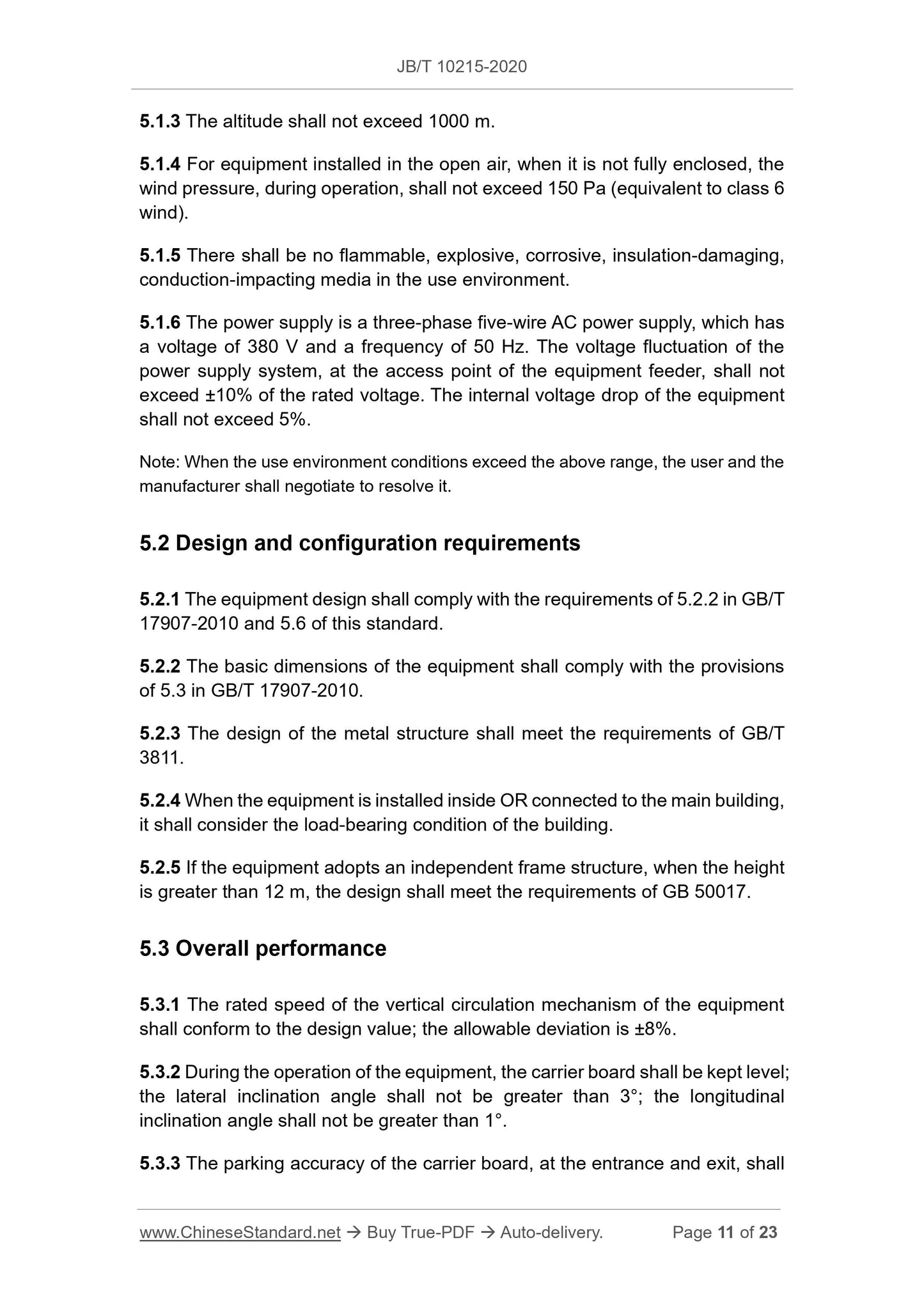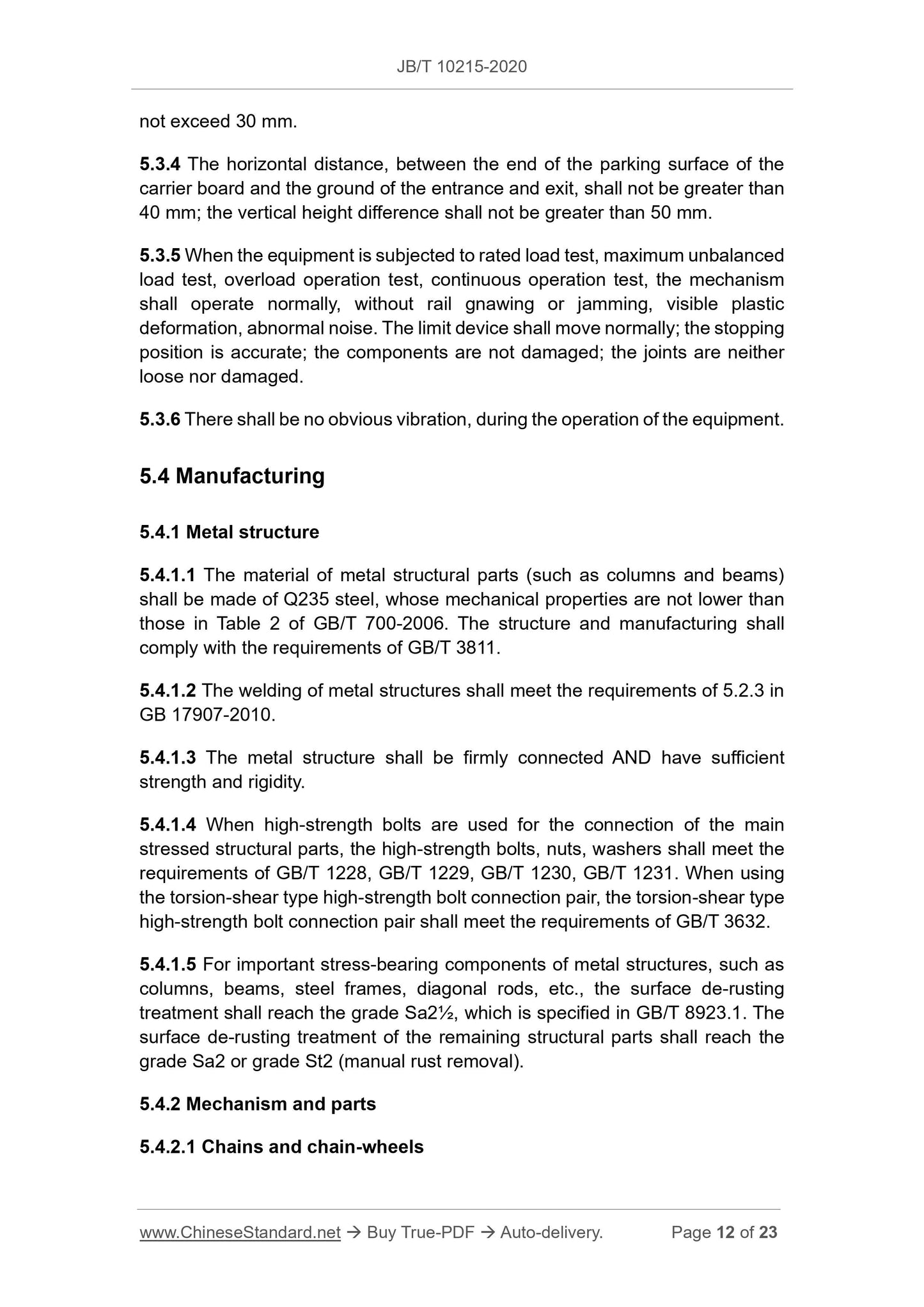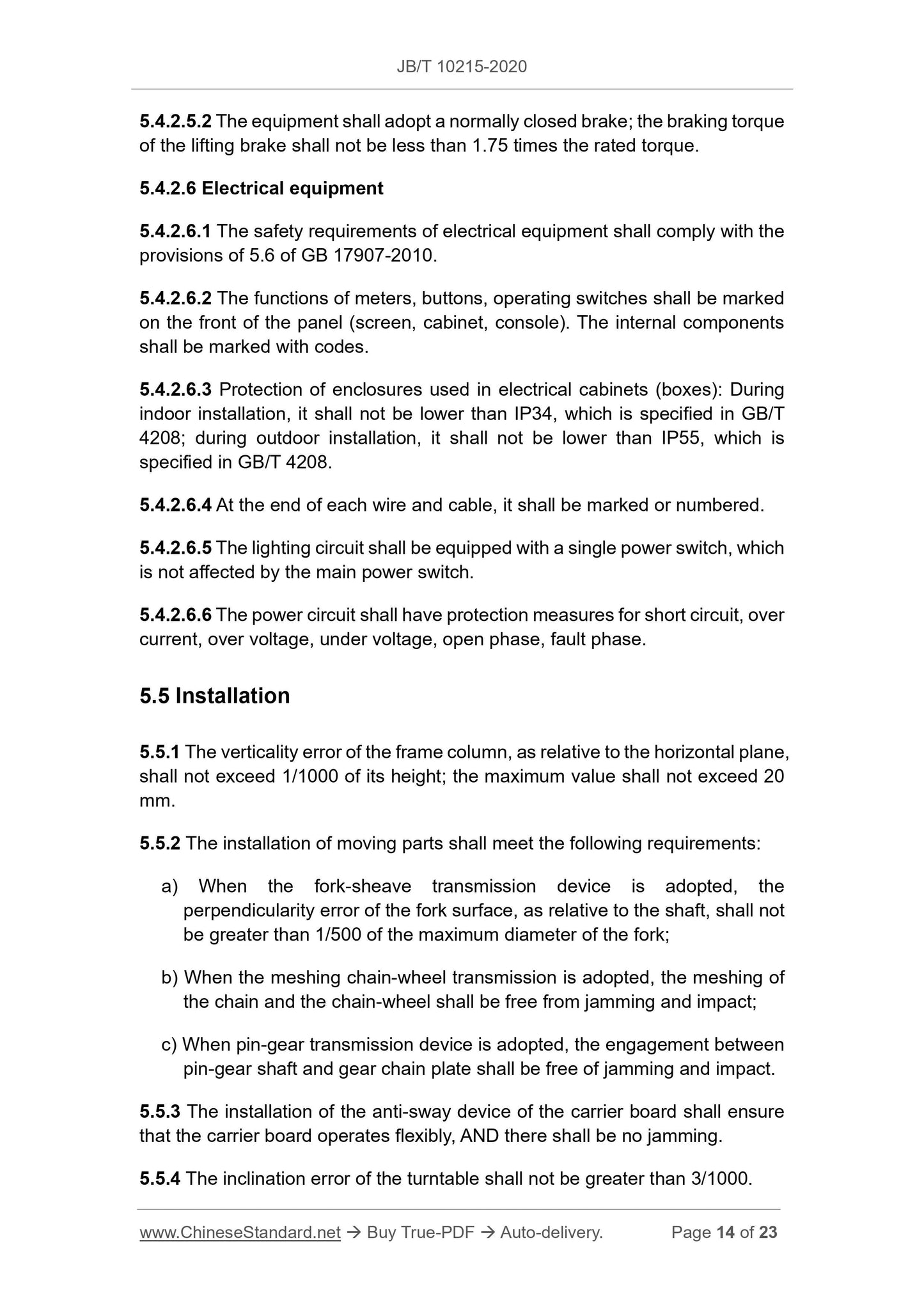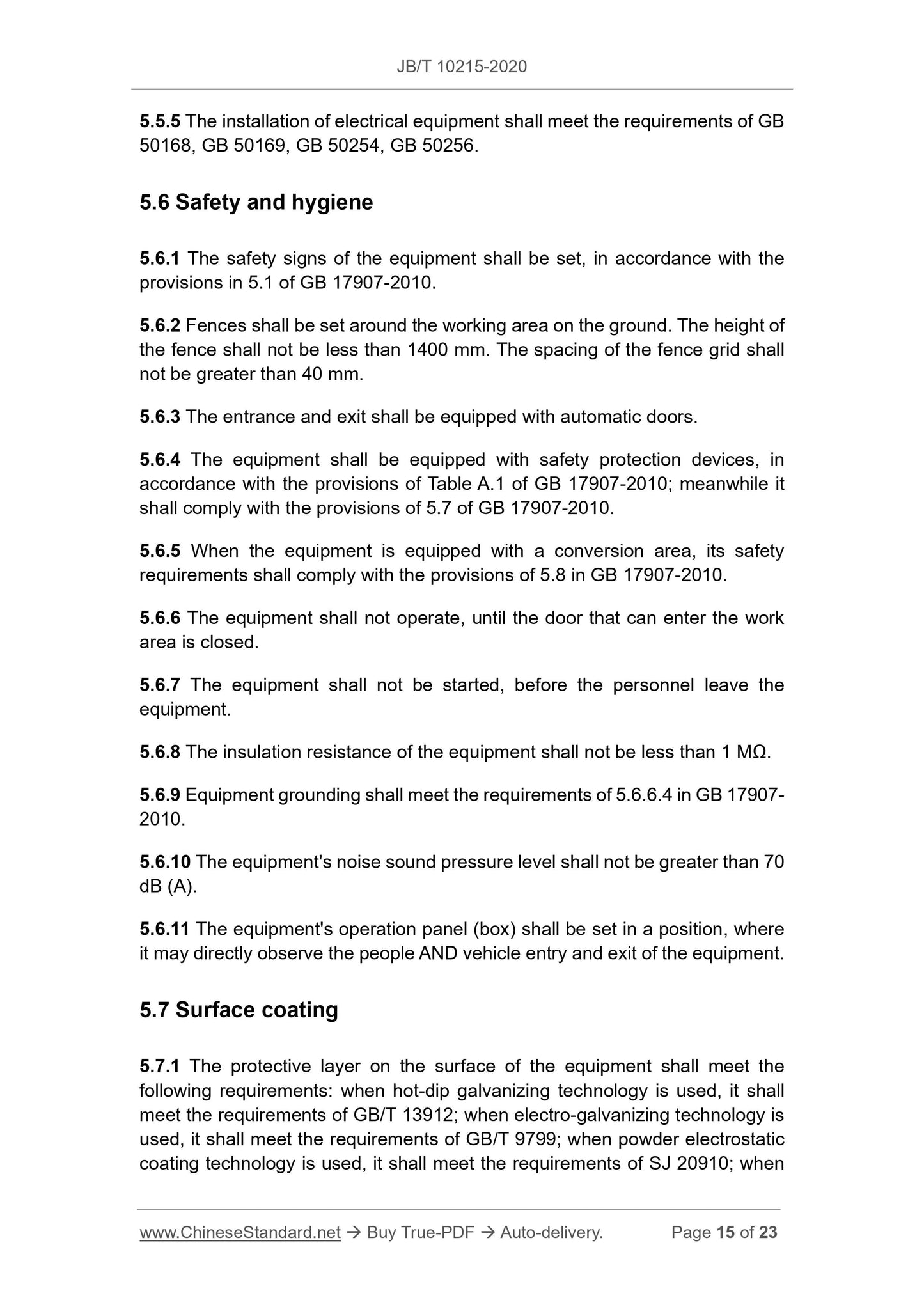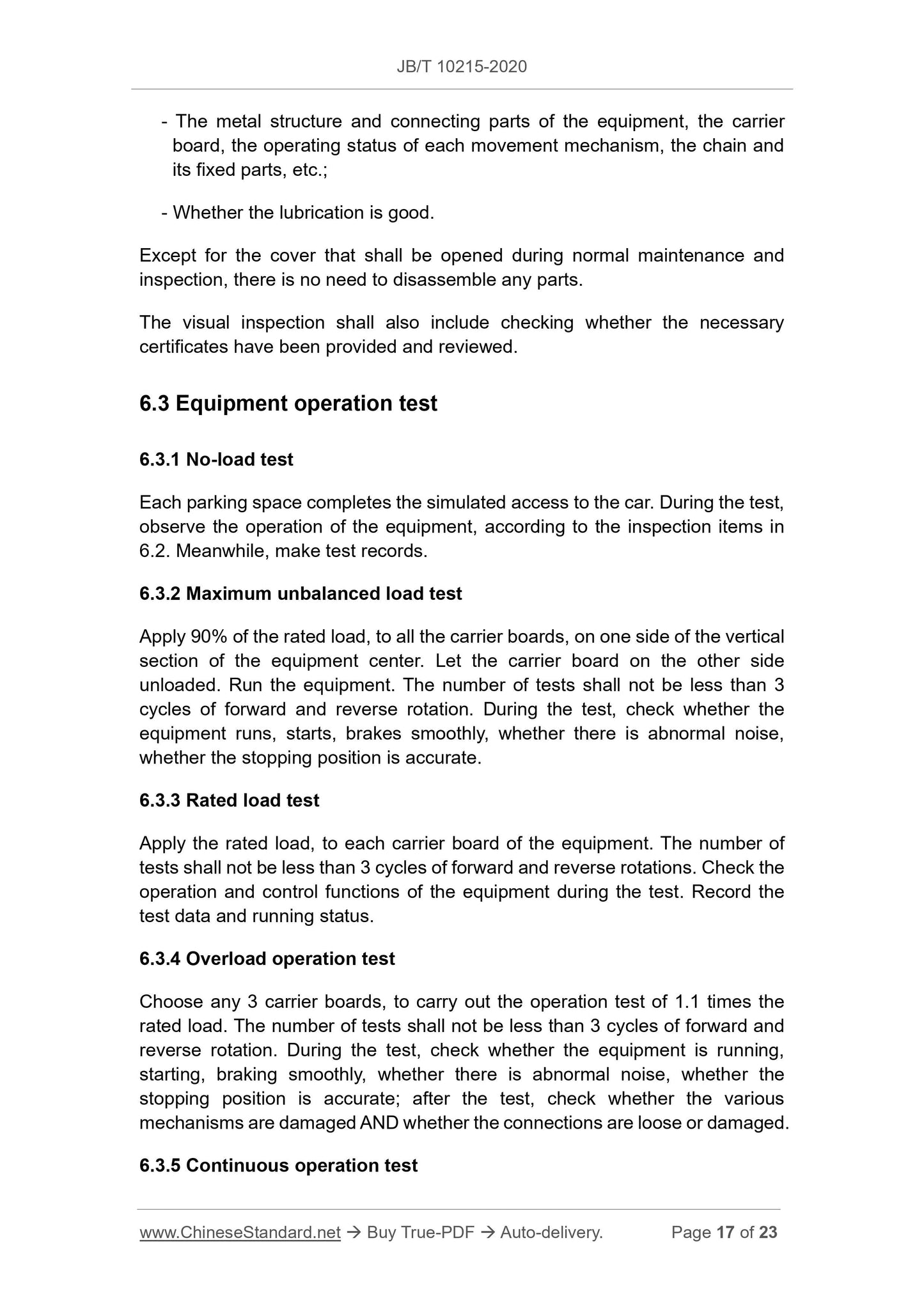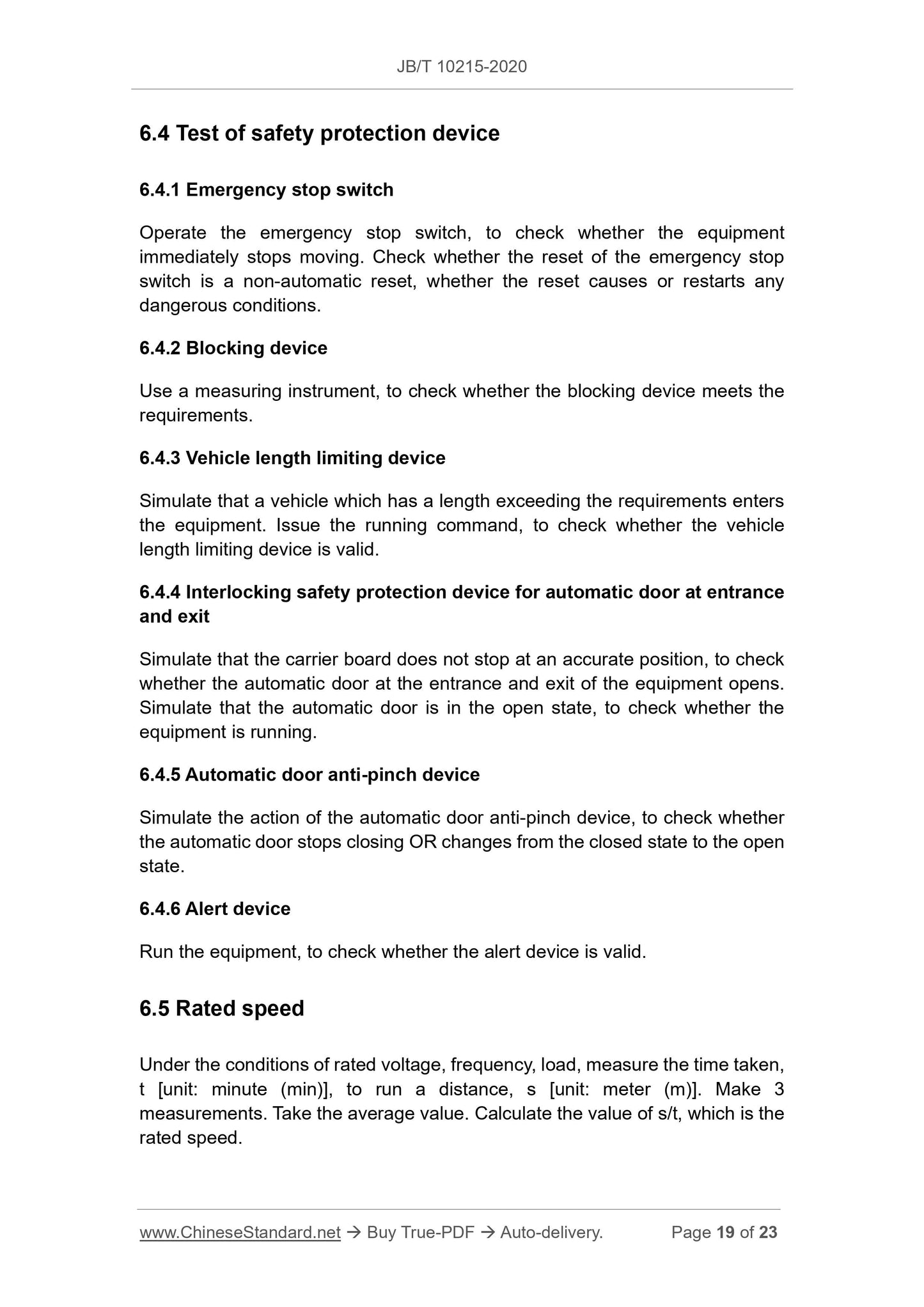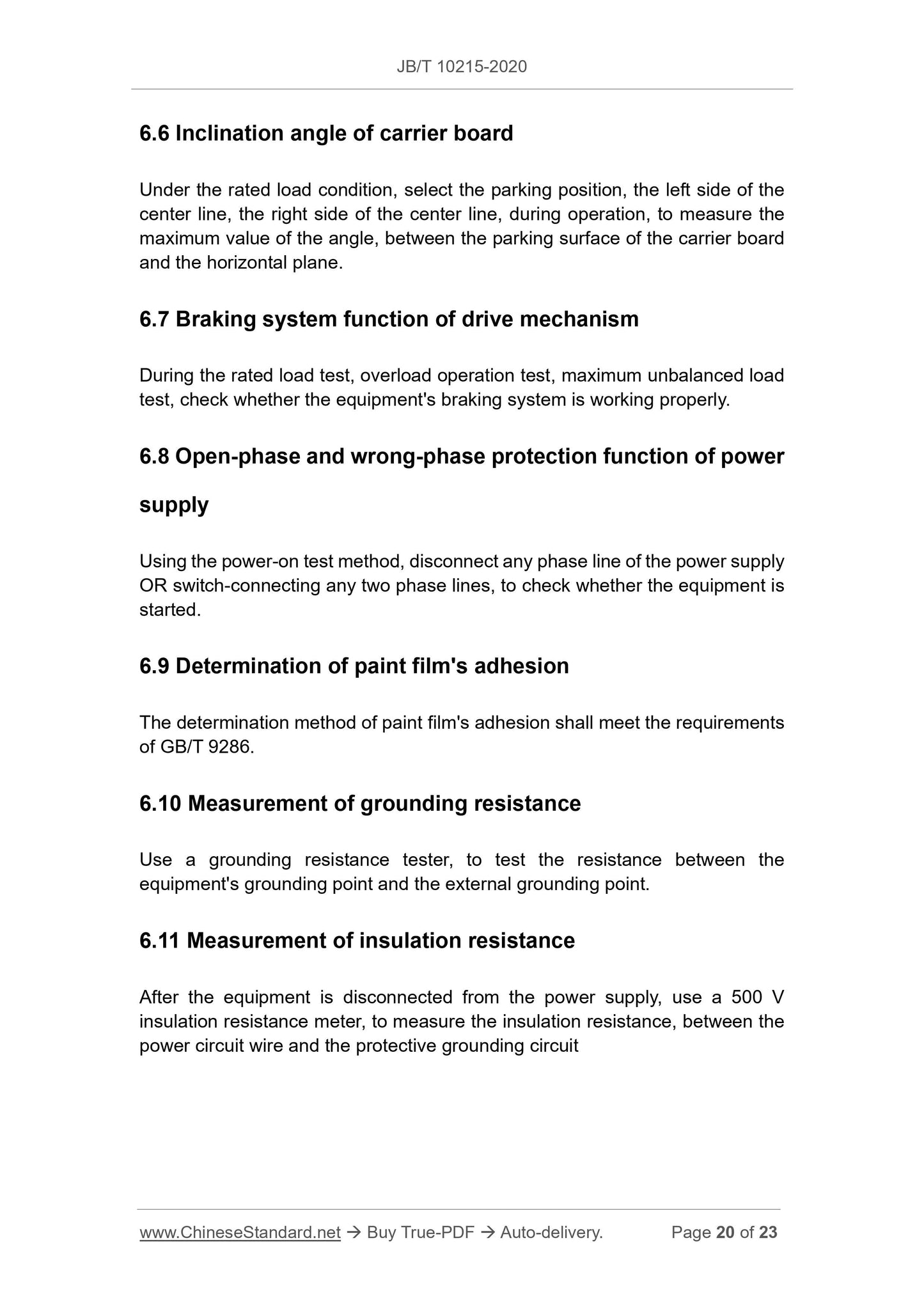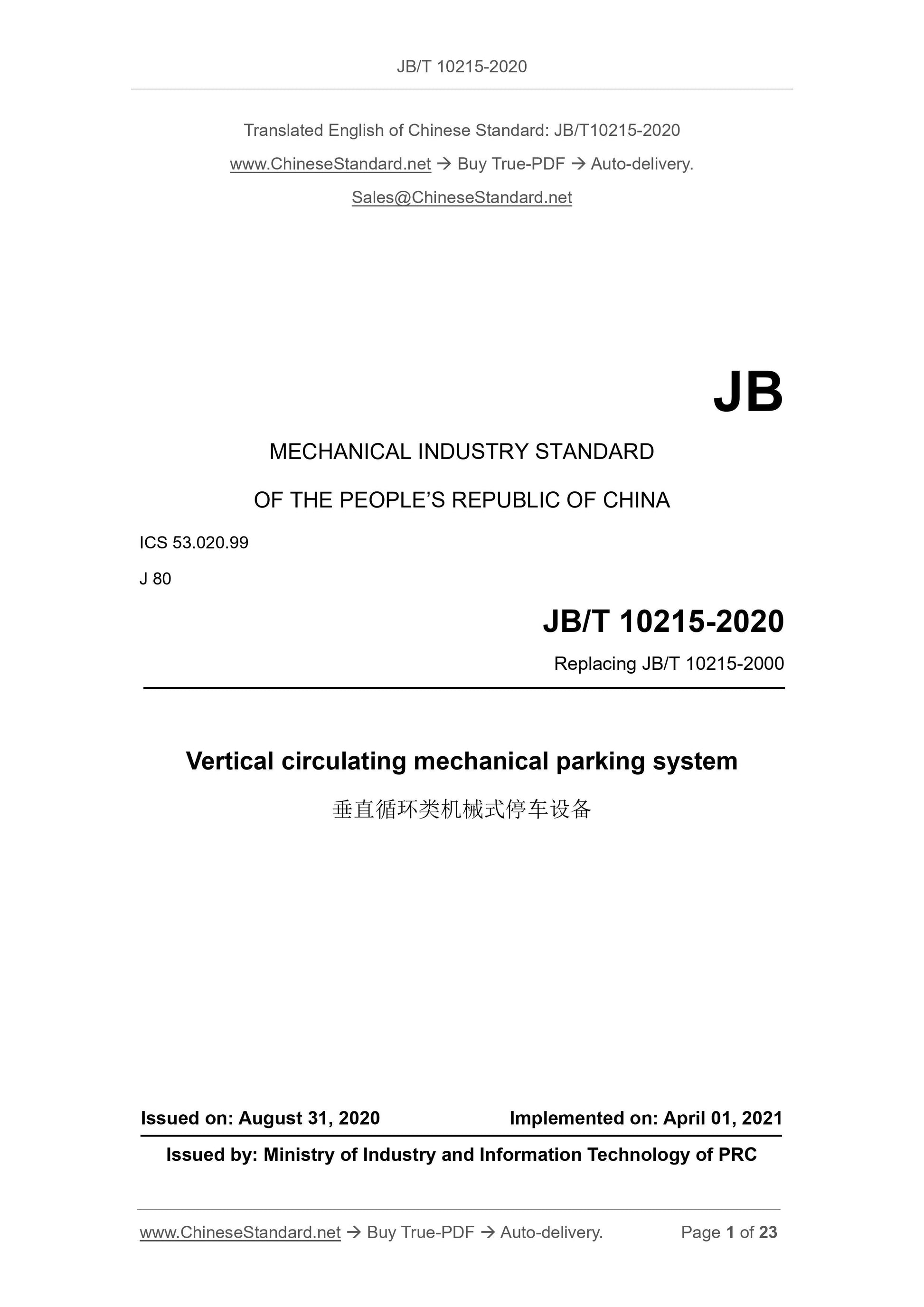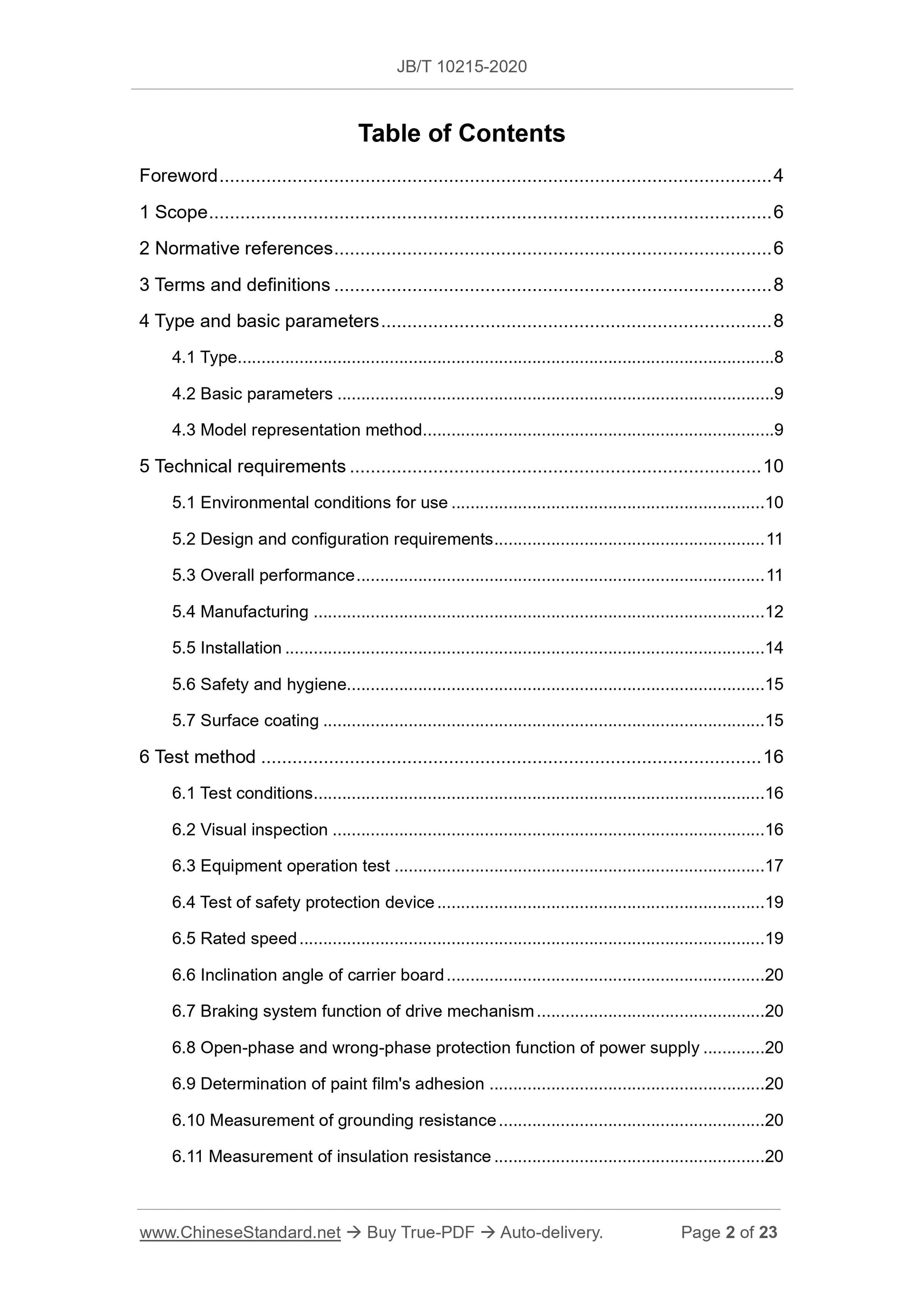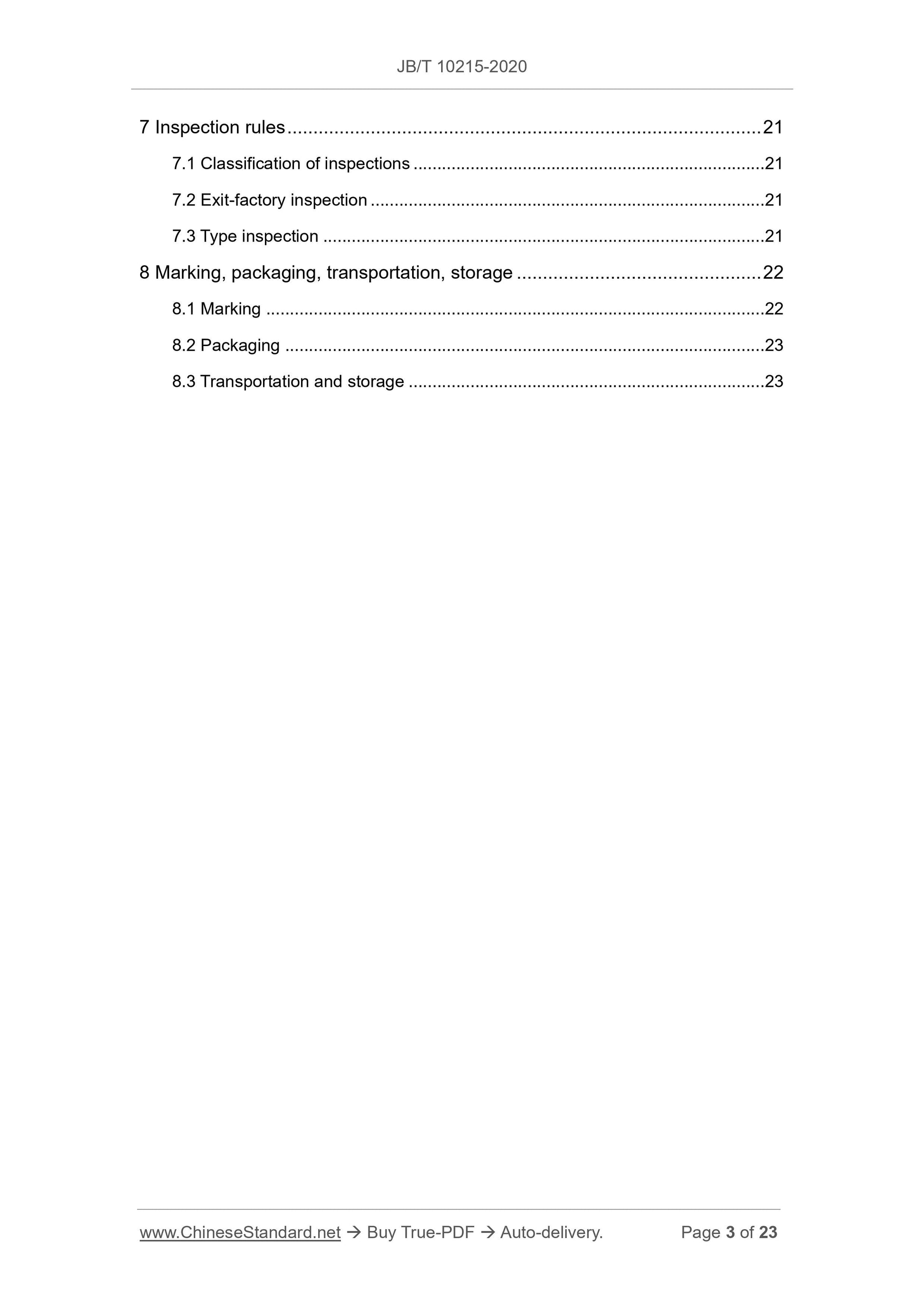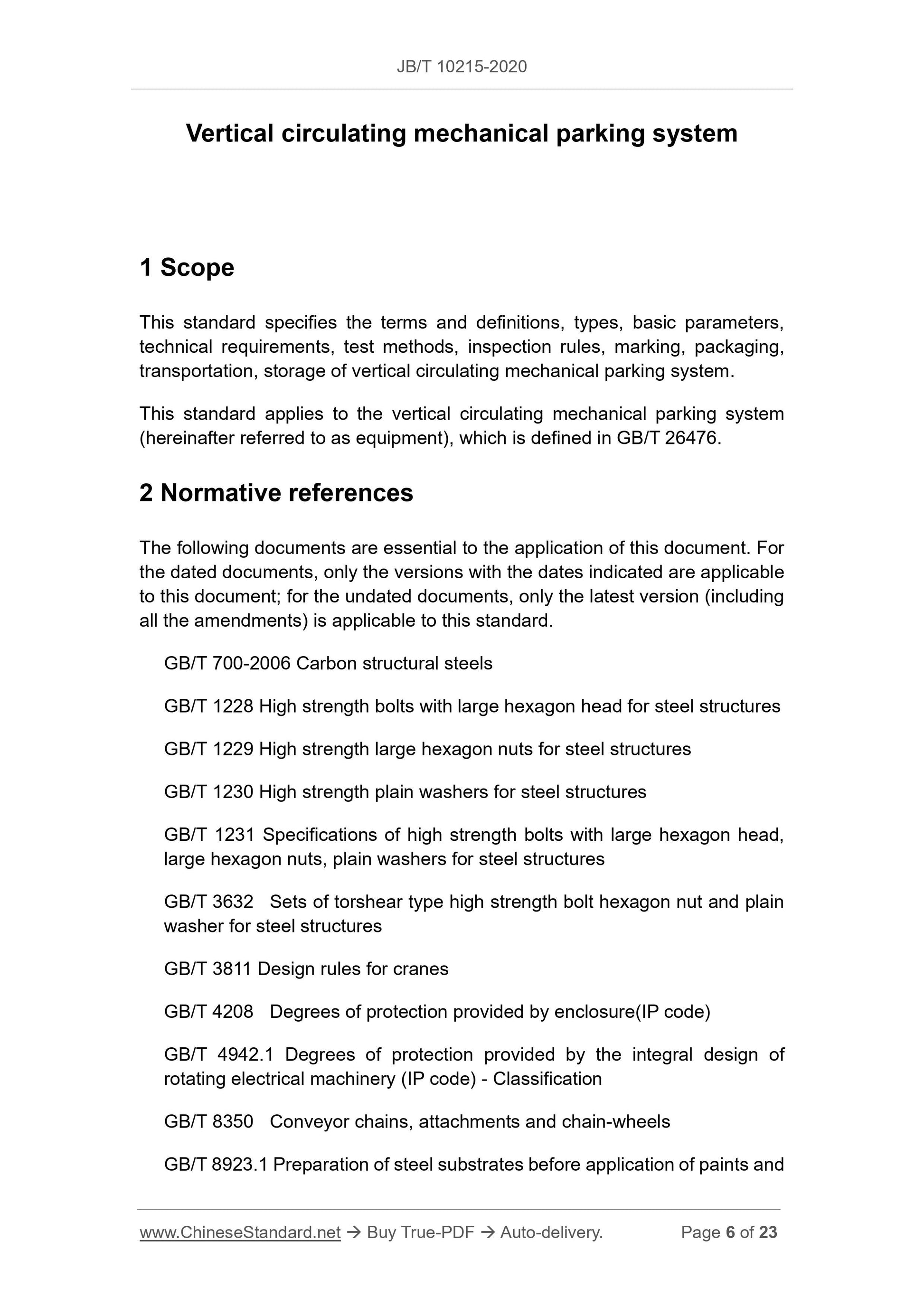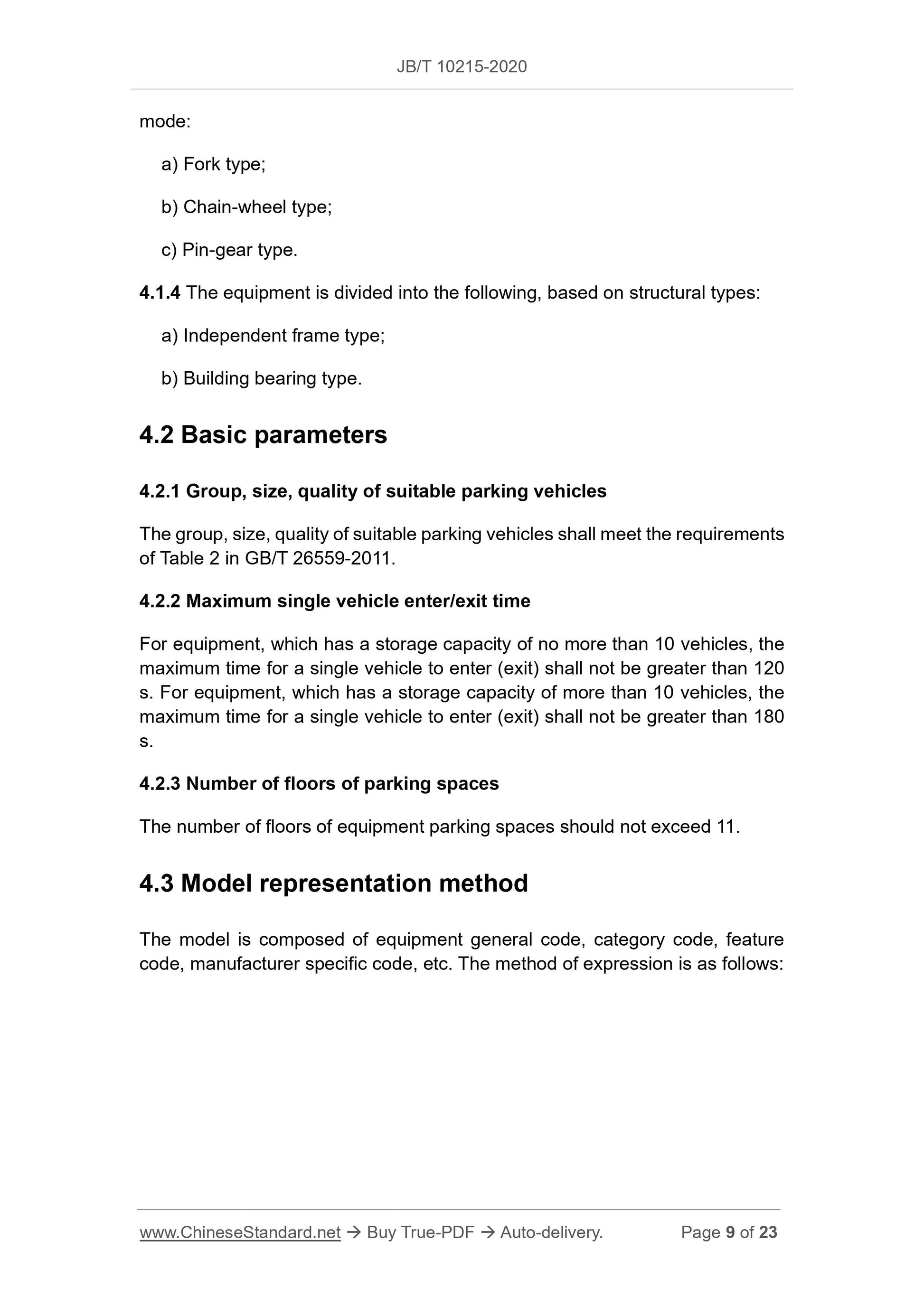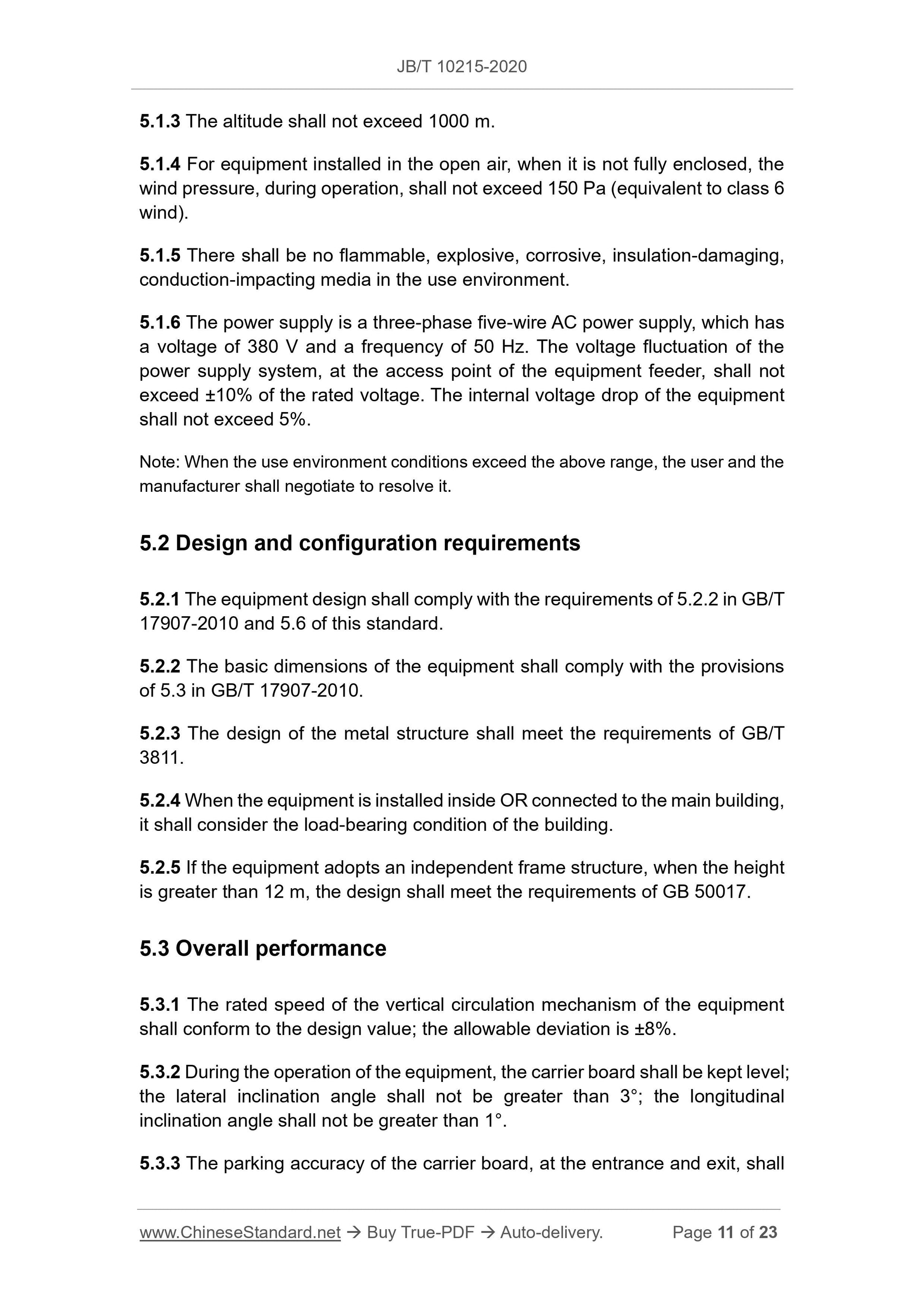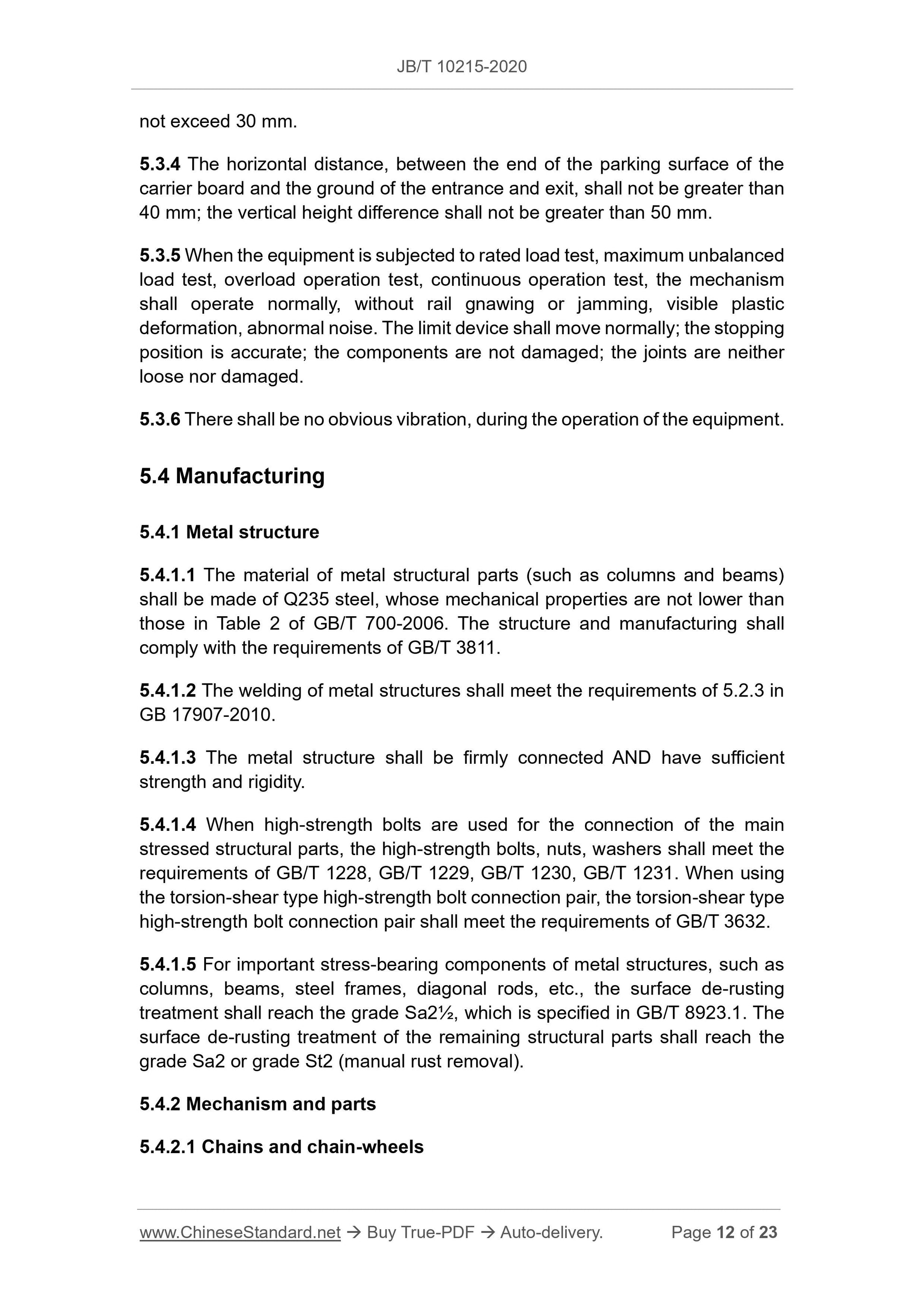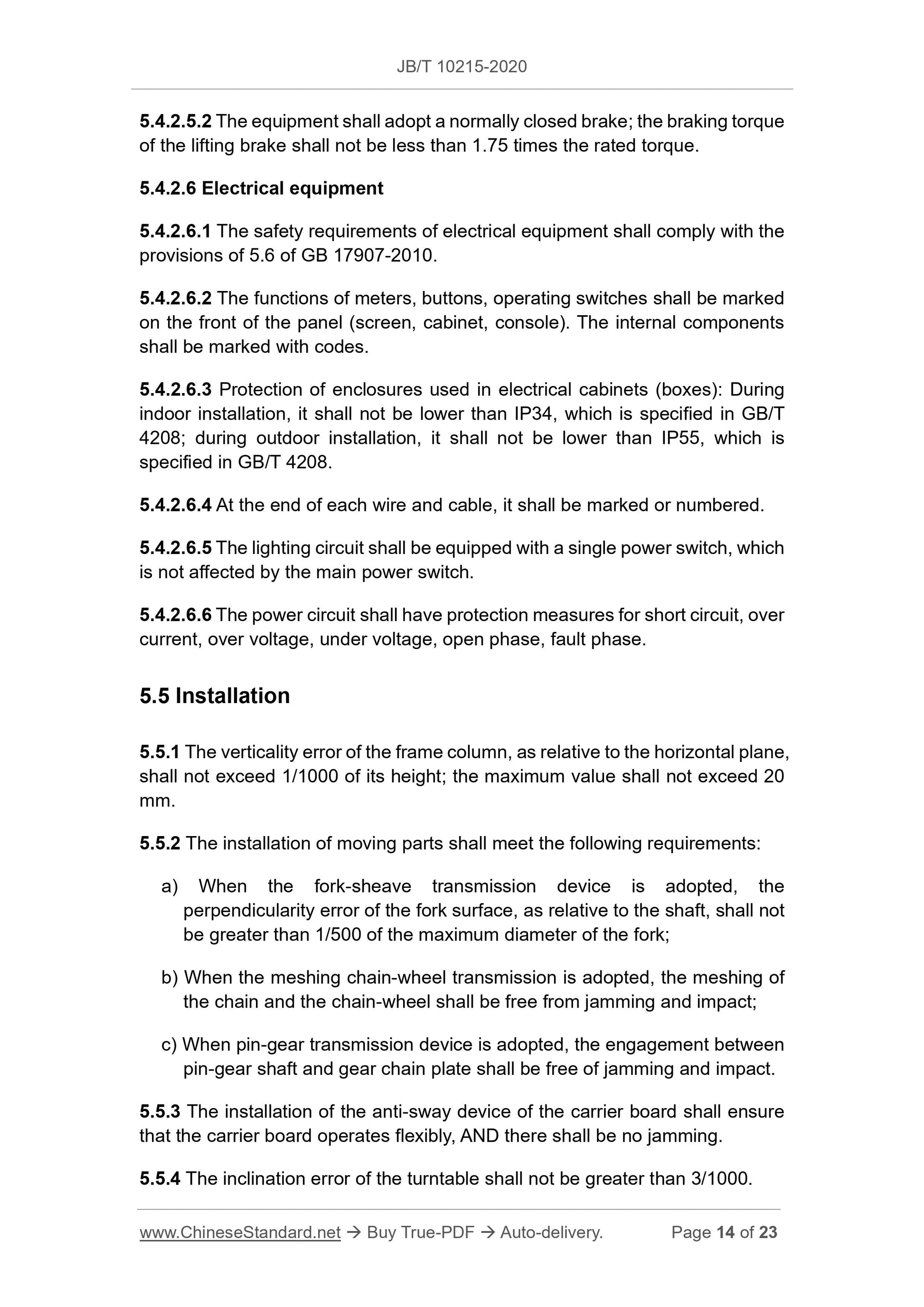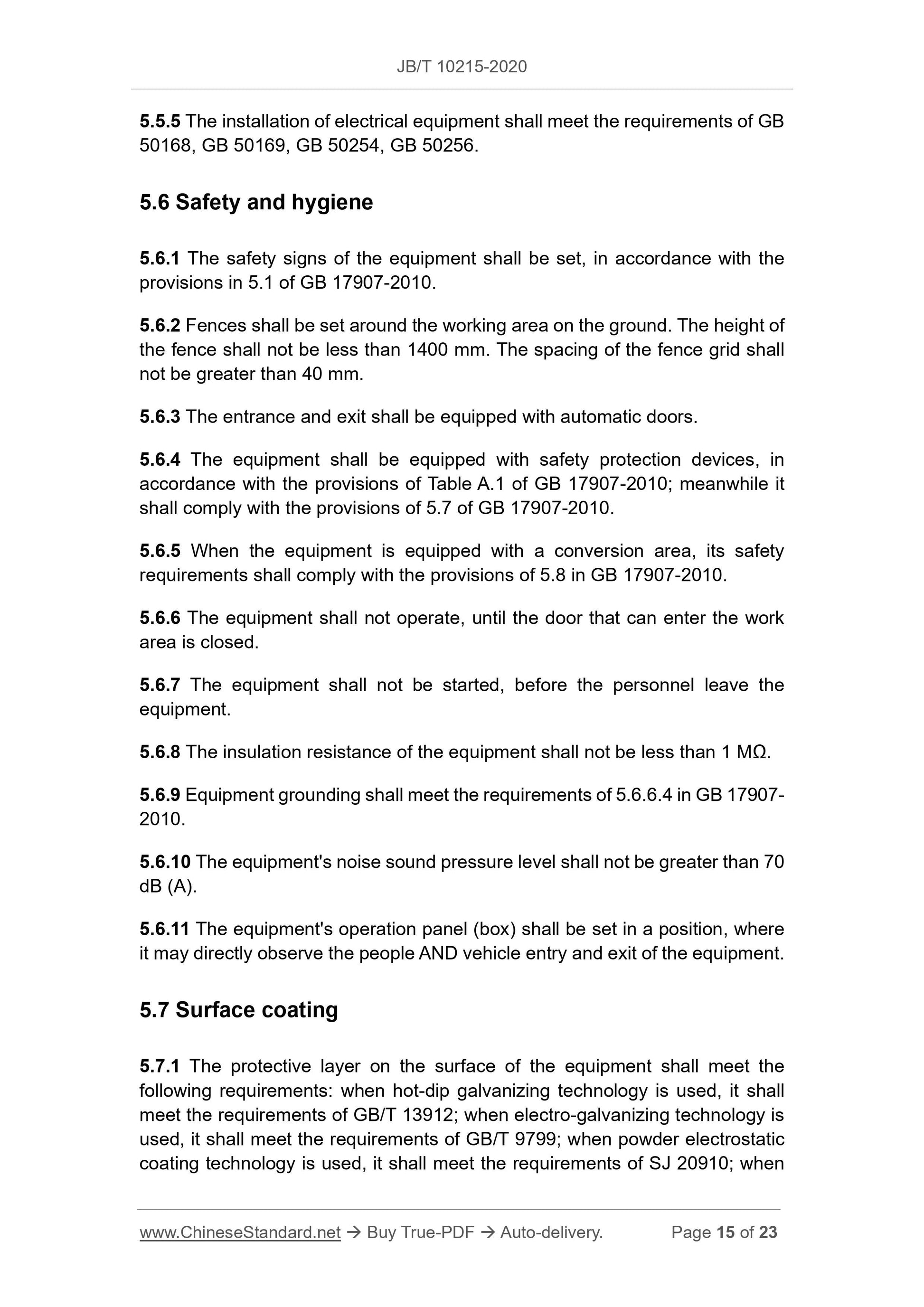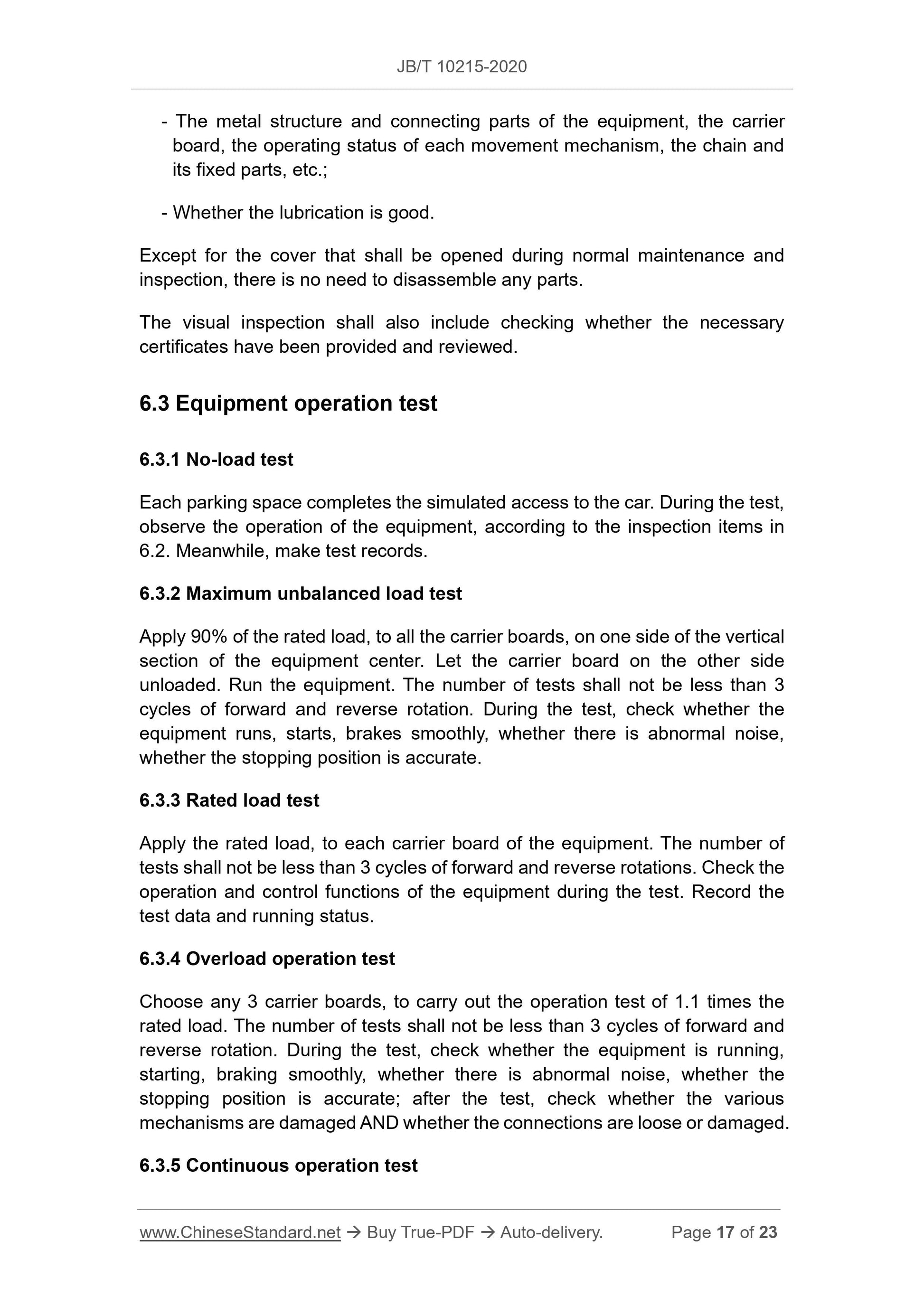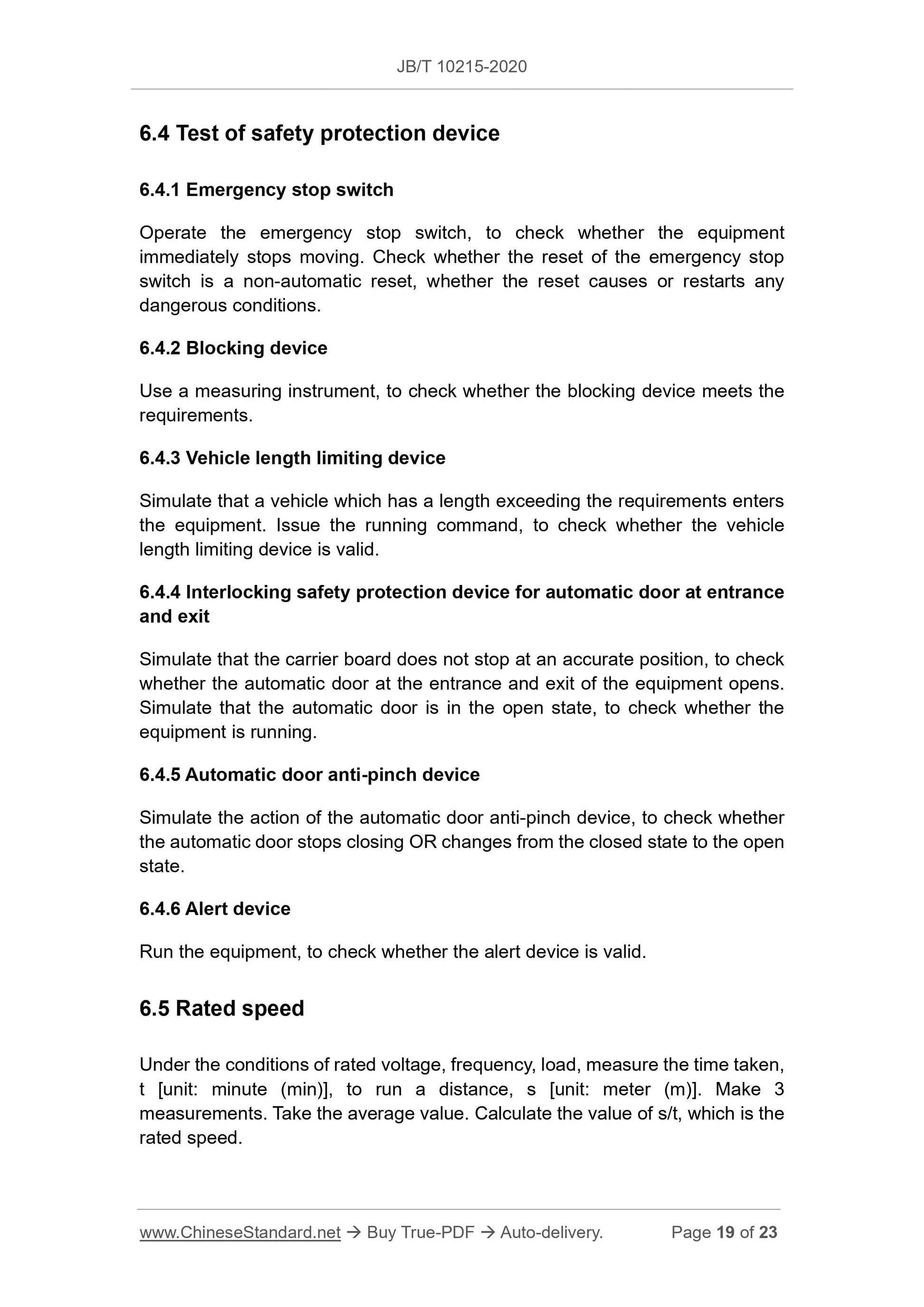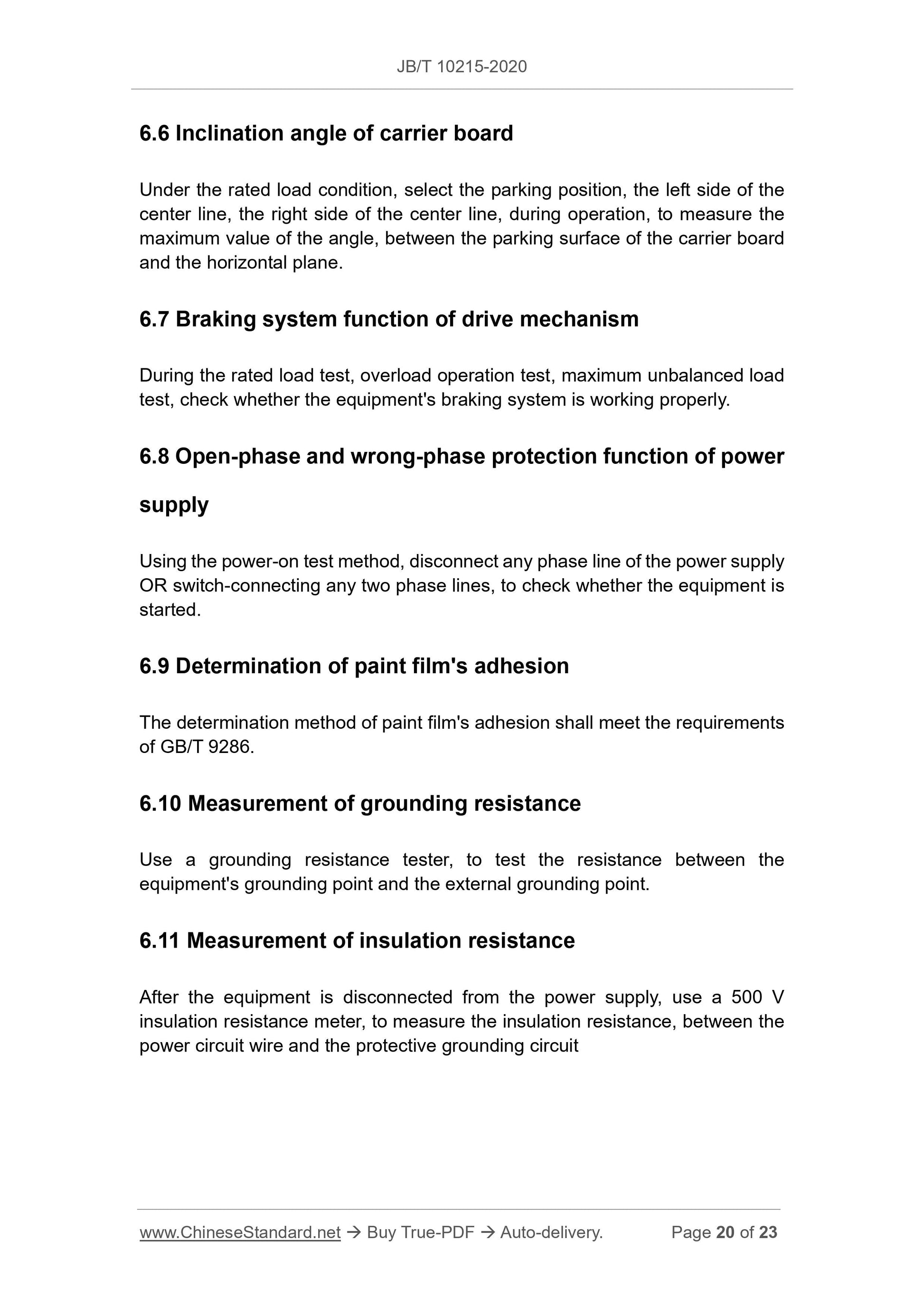1
/
of
12
www.ChineseStandard.us -- Field Test Asia Pte. Ltd.
JB/T 10215-2020 English PDF (JB/T10215-2020)
JB/T 10215-2020 English PDF (JB/T10215-2020)
Regular price
$200.00
Regular price
Sale price
$200.00
Unit price
/
per
Shipping calculated at checkout.
Couldn't load pickup availability
JB/T 10215-2020: Vertical circulating mechanical parking system
Delivery: 9 seconds. Download (and Email) true-PDF + Invoice.Get Quotation: Click JB/T 10215-2020 (Self-service in 1-minute)
Newer / historical versions: JB/T 10215-2020
Preview True-PDF
Scope
This standard specifies the terms and definitions, types, basic parameters,technical requirements, test methods, inspection rules, marking, packaging,
transportation, storage of vertical circulating mechanical parking system.
This standard applies to the vertical circulating mechanical parking system
(hereinafter referred to as equipment), which is defined in GB/T 26476.
Basic Data
| Standard ID | JB/T 10215-2020 (JB/T10215-2020) |
| Description (Translated English) | Vertical circulating mechanical parking system |
| Sector / Industry | Mechanical and Machinery Industry Standard (Recommended) |
| Classification of Chinese Standard | J80 |
| Word Count Estimation | 14,145 |
| Date of Issue | 2020-08-31 |
| Date of Implementation | 2021-04-01 |
| Older Standard (superseded by this standard) | JB/T 10215-2000 |
| Regulation (derived from) | Ministry of Industry and Information Technology Announcement No. 37 (2020) |
| Issuing agency(ies) | Ministry of Industry and Information Technology |
Share
